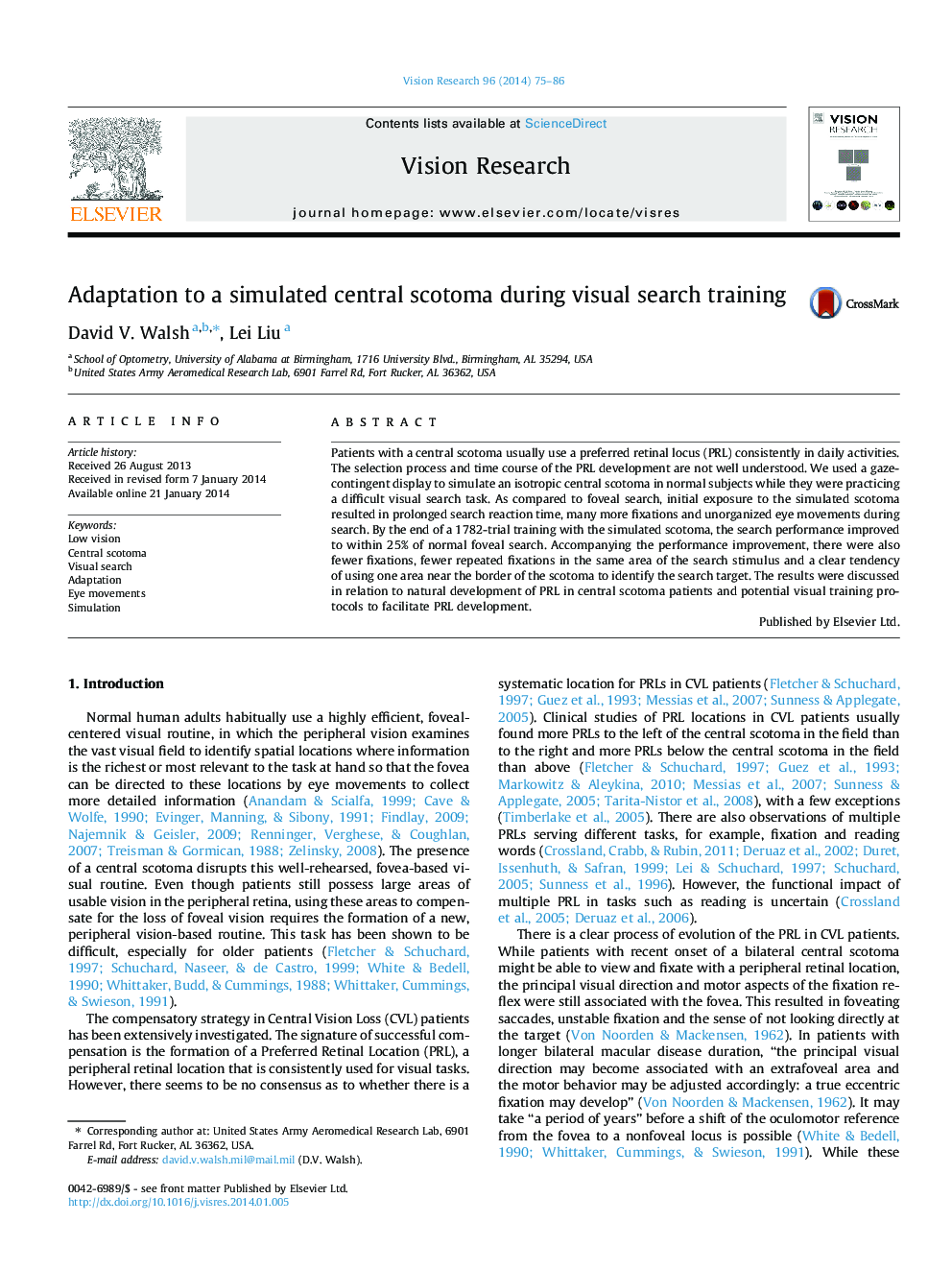| Article ID | Journal | Published Year | Pages | File Type |
|---|---|---|---|---|
| 6203467 | Vision Research | 2014 | 12 Pages |
•Two simulated central scotoma groups were studied in adaption to a visual search task.•Both groups demonstrated ∼250% improvement during adaptation.•Those with a sharper edge (SCS) adapted faster to the search task.•Both groups adapted a consistent retinal location, but the SCS was more concentrated.•The difference in adaptation may be due to more saliency about the location and extent of the scotoma.
Patients with a central scotoma usually use a preferred retinal locus (PRL) consistently in daily activities. The selection process and time course of the PRL development are not well understood. We used a gaze-contingent display to simulate an isotropic central scotoma in normal subjects while they were practicing a difficult visual search task. As compared to foveal search, initial exposure to the simulated scotoma resulted in prolonged search reaction time, many more fixations and unorganized eye movements during search. By the end of a 1782-trial training with the simulated scotoma, the search performance improved to within 25% of normal foveal search. Accompanying the performance improvement, there were also fewer fixations, fewer repeated fixations in the same area of the search stimulus and a clear tendency of using one area near the border of the scotoma to identify the search target. The results were discussed in relation to natural development of PRL in central scotoma patients and potential visual training protocols to facilitate PRL development.
